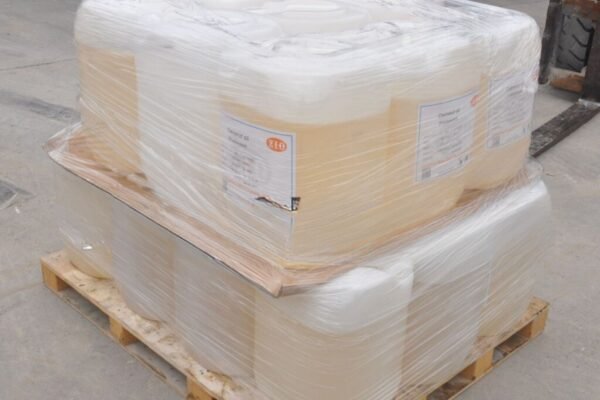Crude coconut oil is derived from the pressing of the dried flesh, or copra, of the coconut fruit. It is typically extracted using mechanical or solvent extraction methods. Here’s a detailed description along with specifications:
Description: Crude coconut oil is characterized by its natural aroma and flavor, which is reminiscent of fresh coconut. It has a pale yellow to light brown color and a semi-solid consistency at room temperature due to its high saturated fat content. This oil solidifies at temperatures below 24°C (75°F) and becomes liquid at higher temperatures.
Specifications:
- Color: Pale yellow to light brown.
- Odor: Characteristic coconut aroma.
- Texture: Semi-solid at room temperature, liquid at higher temperatures.
- Free Fatty Acid Content: Typically ranges from 0.1% to 4.0%. Lower free fatty acid content indicates better quality.
- Moisture Content: Generally below 0.2%.
- Peroxide Value: Typically below 5 meq O2/kg. Higher peroxide values may indicate oxidation and degradation.
- Iodine Value: Ranges from 7 to 11 g I2/100g. This measures the degree of unsaturation of the oil; a lower value indicates higher saturation.
- Saponification Value: Typically ranges from 240 to 270 mg KOH/g. It represents the amount of alkali required to saponify a specific amount of fat or oil.
- Impurities: Minimal impurities are expected, with specifications typically stating maximum allowable levels of contaminants such as heavy metals, pesticides, and microbial counts.
- Storage: Crude coconut oil should be stored in a cool, dry place away from sunlight to prevent rancidity and degradation.
Uses:
- Industrial Applications: Crude coconut oil is used in various industries such as cosmetics, pharmaceuticals, and food processing. It serves as a base ingredient for manufacturing products like soaps, lotions, creams, and hair care products.
- Cooking: While crude coconut oil is not commonly used for culinary purposes due to its strong coconut flavor and aroma, it can be utilized in some traditional dishes for flavoring.
- Biofuel: Some regions use crude coconut oil as a feedstock for biofuel production due to its high saturated fat content and potential for conversion into biodiesel.



